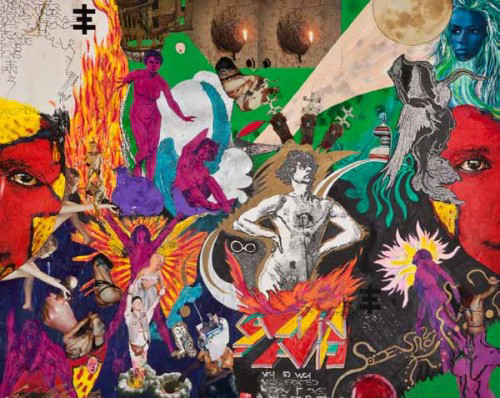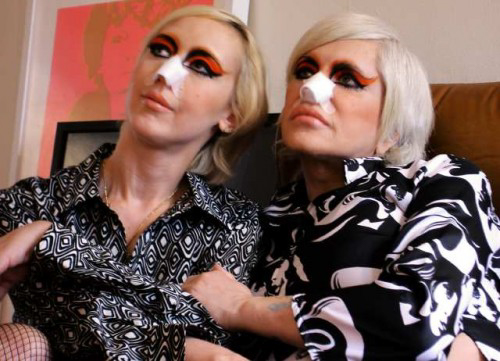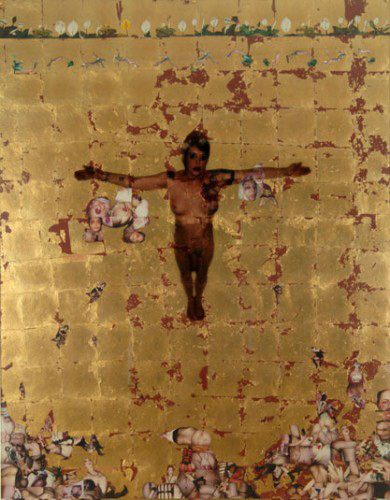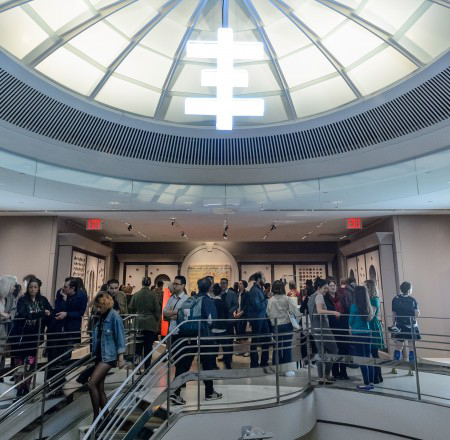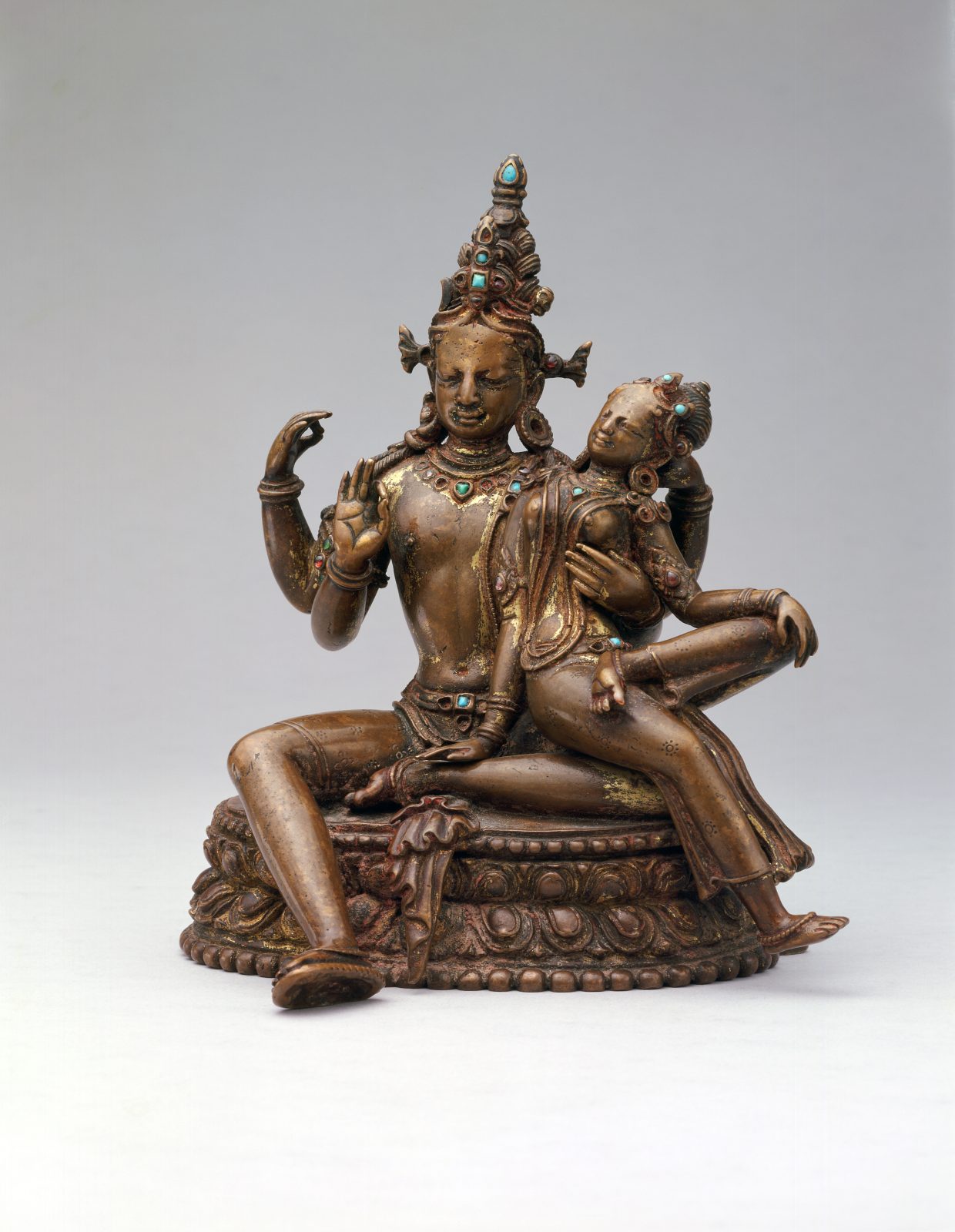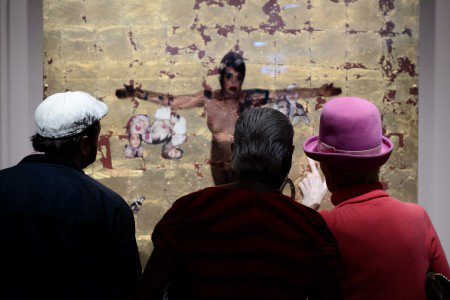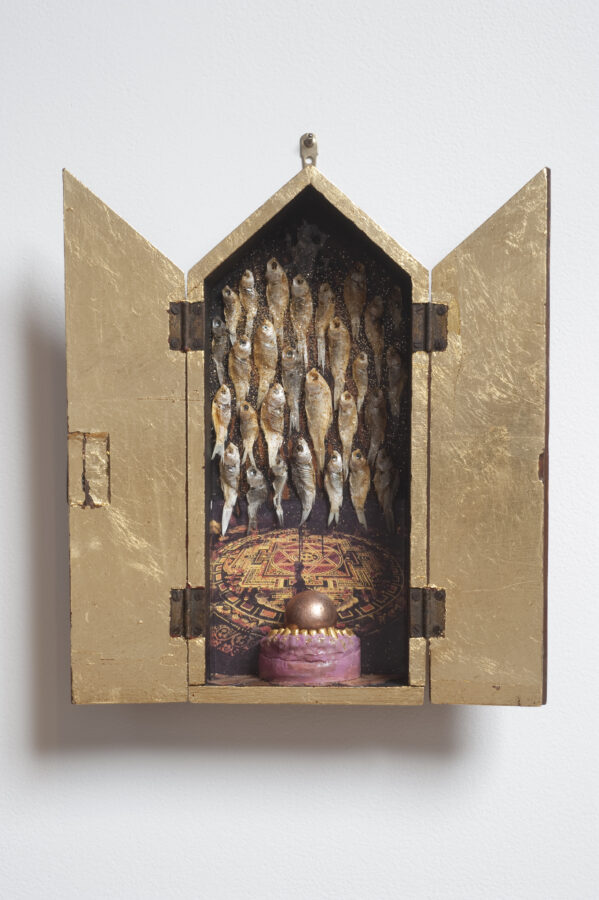The Rubin Museum’s 2016 exhibition Genesis Breyer P-Orridge: Try to Altar Everything challenged visitors to consider the ways that meaning and identity are constructed in everyday life and across cultures. To that end, the artist employed a variety of techniques and terminology that may be unfamiliar to those who are new to Breyer P-Orridge’s work. The terms below were used throughout the exhibition and represent some of the central themes of Genesis Breyer P-Orridge’s artistic practice.
The cut-up technique is an artistic strategy intended to disrupt conventional aesthetics, meaning, and logic. It was invented as early as the 1920s in conjunction with the Dada “anti-art” movement and popularized by Beat writer William Burroughs in the late 1950s and 1960s. The process involves cutting two texts into small parts or fragments and then rearranging them to create a new, third text that defies authorship and narrative.
Renowned writers, such as Julio Cortázar, and musicians, including David Bowie, Bob Dylan, Kurt Cobain, and Thom Yorke, have used the cut-up technique to write lyrics. Breyer P-Orridge used collage in h/er work as a visual manifestation of the cut-up, and s/he and Lady Jaye Breyer P-Orridge applied the concept to their own bodies through their practice of Pandrogeny.
Pandrogeny, which stands for Positive Androgyny, is a practice conceived by Genesis and Lady Jaye Breyer P-Orridge to break down the limitations of biological sex and express their unconditional love for each other. Through Pandrogeny the couple sought to create a cosmic union and “conceptually more precise body” through elective surgeries, cross-dressing, and behavioral modifications.
On the surface Pandrogeny appears concerned with gender and bears resonance with transgender transitions; Breyer P-Orridge was a proud and willing spokesperson for transgender rights and issues. Conceptually, however, the project broadly seeks to dissolve the binaries (including male and female) that shape our culture and to support transformation of the self.
In their effort to transcend gender binaries through the practice of Pandrogeny, Genesis and Lady Jaye Breyer P-Orridge adopted a set of creative and inclusive pronouns for self-identification: s/he and h/er. In speech and in writing, Genesis Breyer P-Orridge referred to h/erself as “we,” in reference to the continuation of her union with Lady Jaye (and a play on the British royal plural pronoun), and accepted the gender neutral plural pronouns “they” and “their.”
A sigil is a focusing ritual originating in occult traditions that enables practitioners to achieve certain goals. First practitioners define their intention with a statement of image. That image is then transformed into a charged physical tool on which to focus the mind, especially as the practitioner reaches a sexual climax.
For example, for h/er sigils Genesis Breyer P-Orridge created thematic mixed media collages, but other mediums, including the use of modern technology, are also effective. Ideally the sigil ritual is undertaken at 23:00 on the 23rd day of the month, as 23 is an auspicious number in these traditions.
Mandala, Sanskrit for “circle,” is a complex symbol in Asian religions. In Tantric Buddhism it represents the palace of a deity. Practitioners visualize the deity dwelling at the core of the mandala as well as that deity’s attendants and the palatial gardens that surround them. In tantric meditation, practitioners identify with the central deity as a means of cultivating enlightenment, the goal of their religious practice. The mandala is a locus of divine power that is believed to bless and protect devotees.
Genesis Breyer P-Orridge created the psychic cross as the visual emblem of the network she cofounded called Thee Temple ov Psychick Youth (TOPY) and h/er music group Psychic TV. Breyer P-Orridge designed the cross with specific proportions, with the ratio of the shorter bar to the longer bars as two to three because 23 is a key number in TOPY thought. The psychic cross relates broadly to the Latin cross and more closely to the three-barred Orthodox or Byzantine cross. It appears throughout Breyer P-Orridge’s work.
Shiva is one of the major deities in the Hindu pantheon and forms a divine couple with the goddess Parvati. Shiva takes many forms, both benevolent and wrathful, and is often worshiped in the phallic form of a lingam. Some of the most common attributes of Shiva are that he has a third eye, holds a trident, and wears a tiger skin. Sometimes Shiva and Parvati are joined as a half-male, half-female figure called Ardhanarishvara. Breyer P-Orridge adopted this as a Pandrogeny ideal.
Thee Temple ov Psychick Youth (TOPY) was a forum cofounded in 1981 by Genesis Breyer P-Orridge as an outgrowth of h/er work in the music group Psychic TV. TOPY was concerned with occultism within contemporary culture. Its primary goal was the self-directed expansion of consciousness among its members, including through the process of creating sigils. Breyer P-Orridge stated that the core of TOPY’s practice was discipline, helping members focus on and actualize their desired lives. Psychic TV was the public face of TOPY during its 11 active years.
